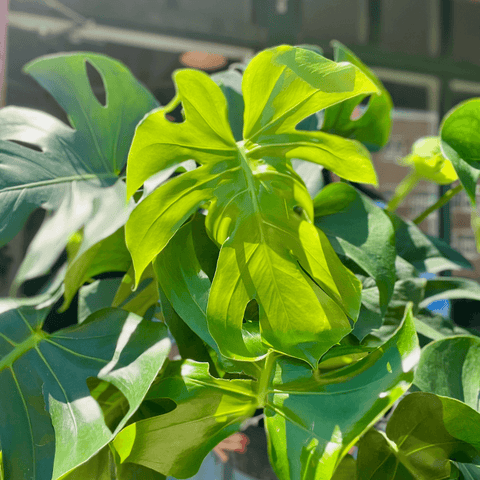As summer's warm and sunny days approach, it's time to give your indoor green companions some extra love and attention. Transitioning your houseplants for the summer season is crucial to ensure their health and vibrancy. With a few simple steps and a touch of care, you can help your plants thrive during the long, sun-filled days. In this blog post, we'll explore valuable tips to guide you through transitioning your houseplants for summer.
- Adjust the Watering Routine: During summer, plants experience faster growth, increased transpiration, and higher water requirements. It's essential to adjust your watering routine accordingly. Check the soil's moisture level regularly, and water your plants when the top inch of the soil feels dry. However, avoid overwatering, as excess moisture can lead to root rot. Remember to use room temperature water and ensure proper drainage.
- Provide Adequate Sunlight: Most houseplants thrive in bright, indirect light. As the intensity of sunlight increases during summer, consider moving your plants to a spot that receives bright, filtered light. Avoid placing them directly in the path of intense sunbeams, as this can scorch the leaves. Observe your plants and adjust them to strike the right balance between light exposure and shade.
- Gradually Introduce Outdoor Conditions: If you have plants that can benefit from spending time outdoors, consider progressively acclimating them to the outdoor environment. Start by placing them in a shaded spot for a few hours a day, gradually increasing their exposure to sunlight over several weeks. This process helps prevent shock from sudden temperature and light changes, allowing the plants to adjust more smoothly.
- Protect from Extreme Heat: While plants need sunlight, shielding them from extreme heat is crucial. Direct exposure to scorching temperatures can cause sunburn and stress your plants. Use sheer curtains or blinds to filter sunlight during the hottest day. If outdoor plants are exposed to intense heat, provide them with temporary shade or relocate them to a cooler spot until temperatures become more favorable.
- Increase Humidity: As the summer heat rises, the air becomes drier, adversely affecting humidity-loving plants. You can boost humidity levels around your houseplants by using a humidifier, grouping plants, misting their foliage (avoid misting fuzzy-leaved plants), or placing a water tray near them. These measures help maintain an optimal environment for your green friends.
- Prune and Groom: Summer is an excellent time to groom your plants. Trim any dead or damaged leaves, and remove spent flowers to redirect the plant's energy toward healthy growth. Pruning also helps to improve airflow and prevent the development of pests or diseases. Additionally, consider repotting any plants that have outgrown their containers to provide them with fresh soil and room for further growth.
- Monitor for Pests: Summer warmth can create favorable conditions for pests such as spider mites, aphids, and mealybugs. Regularly inspect your plants for any signs of infestation, such as discolored leaves, sticky residue, or visible insects. If you detect pests, promptly isolate affected plants, and take appropriate measures to eradicate them. Organic pest control options include using insecticidal soap or neem oil sprays or employing natural predators like ladybugs.
Transitioning your houseplants for summer requires a thoughtful approach to ensure their well-being and vitality. By adjusting watering routines, providing adequate sunlight, gradually introducing outdoor conditions, protecting from extreme heat, increasing humidity, pruning and grooming, and monitoring for pests, you can help your indoor green.





Comments (0)
There are no comments for this article. Be the first one to leave a message!